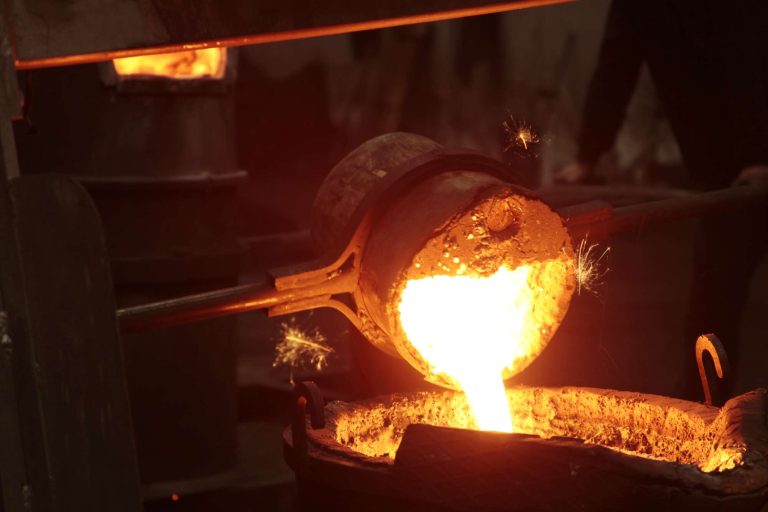When you’re scaling up to produce thousands of parts, the advantages of die casting become clear. It offers fast production, accurate repetition, and dramatically reduced per-unit costs. At KenWalt, we’ve honed this process to deliver high-volume, high-quality results efficiently.
In this post, we’ll guide you through the differences between die casting and CNC machining at scale. You’ll learn how each process functions, know when one is more effective than the other, and understand how KenWalt supports both to optimize production for your needs.
KenWalt’s Expertise in High-Volume Casting
KenWalt has long understood that consistent quality demands control—and control comes from integration. Our facility streamlines everything from engineering and tooling to finishing and packaging. This cohesion ensures clear communication, fewer delays, and reliable outcomes on every production run.
We also use vacuum-assisted casting to remove trapped air before injection. Our cutting-edge technique delivers denser, more durable parts by reducing defects sometimes found in other casting methods. KenWalt also uses mold flow simulations and automated ladling and spraying systems in large-scale runs.
Speed and Efficiency: Seconds vs Minutes
Once molds are ready, die casting delivers unmatched speed and accuracy. Liquid metal fills intricate molds in milliseconds, even for thin walls or complex shapes. At KenWalt, our multi-cavity tooling and streamlined automation further slash per-part cycle times.
On the other hand, CNC machining often requires multiple operations, such as milling, drilling, and tapping, which can each add minutes to the process. When multiplied across large production volumes, this time adds up, increasing both cost and lead time. For mass runs, die casting clearly outpaces machining while maintaining quality.
Accuracy Built Into the Mold
Die casting embeds tolerances and geometry into the mold, delivering parts that are already close to final specs. KenWalt leverages this by performing precision touch-ups, like holes, threads, and surface finishes, with in-house CNC machining, combining speed with accuracy.
This streamlined approach allows you to achieve complex detail without sacrificing production speed. Die casting captures the shape, and precise machining delivers performance-ready components efficiently.
Cost Savings That Grow with Volume
Creating a die mold is a larger upfront investment, but the per-part cost rapidly decreases as volume increases. With Kanban systems and dock-to-stock workflows, KenWalt minimizes handling and storage costs, maximizing value over long production runs.
In contrast, the cost associated with machining increases with volume due to labor, tool wear, and machining time. The fewer steps you require post-casting, the more cost-effective your production becomes. Die casting wins on cost once volume exceeds a certain threshold.
Material Efficiency and Sustainability
Die casting is inherently near-net shape, meaning most of the final form is achieved in the mold with minimal material waste. KenWalt enhances this by recycling flash and gating materials trimmed during finishing.
In contrast, CNC machining removes and discards substantial material from billet, increasing waste and cost. Die casting maximizes material utilization and can help meet sustainability goals, without sacrificing product quality.
Smart Design Integration
Features like ribs, bosses, and undercuts can be molded into parts, streamlining production by eliminating assembly or welding. KenWalt’s engineers work closely with clients in early design phases to integrate these features, reducing complexity, post-processing, and costs.
You design once; KenWalt molds it right every time. The repeatability of die-casting reduces downstream operations and supports robust, repeatable manufacturing. All of which are especially vital for programs that demand consistency over high volume.
When CNC Still Makes Sense
There are scenarios where CNC machining holds the advantage, such as quick-turn prototypes, highly detailed small runs, or parts with frequent design edits. KenWalt also offers in-house CNC services to validate designs and test fit and function before committing to mold building.
This hybrid flexibility allows you to test economically and produce precisely, selecting casting or machining based on the part’s requirements.
KenWalt Integrated Die Casting Wins at Scale
KenWalt brings engineering, vacuum-assisted die casting, CNC machining, and final finishing together under one roof. That integration ensures traceability across every part, from casting to packaging. Aerospace, industrial, and consumer clients rely on KenWalt for precise, repeatable, high-volume solutions.
For large production runs, the advantages of die casting are clear: faster production, lower cost per part, feature integration, tight tolerances, and minimized waste. KenWalt advances those advantages with internal engineering, smart tooling, and streamlined production flow—delivering parts on time, on spec, and on budget.
Ready to Scale Your Die-Casting Project With KenWalt?
KenWalt can help design the optimal path for your project, whether it’s die casting, CNC machining, or a mix of both.
Contact us to explore how to reduce cost, improve delivery, and maximize part quality.



